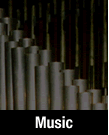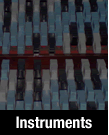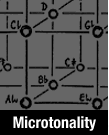
|
Microtonal instruments
Euler-organ (1943)
In 1943 a little organ was constructed that could sound the ten so-called Euler-Fokker genera of the third degree. It was built by the firm "Gebroeders van Leeuwen" in Leiderdorp. Fokker gathered people from time to time in Teyler's Museum to discuss the music theory connected with the genera. He began musical composition by writing short pieces to illustrate the ten genera on the organ. In the beginning it was installed in de auditorium of Teyler's Museum, but later moved to the museum collection on the ground floor, where it is still on display. It can be viewed as a predecessor of the Fokker-organ (1950). Carrillo-pianoIn 1895 the Mexican Julian Carrillo (1875 - 1965) worked on the problem of the 1/16 tone interval for the first time, as yet probably the smallest unit between the usual semitone step. In 1925 he devised an original notation for these ideas. Together with the conductor Leopold Stokowski he founded an “Orquesto Sonido 13”, in other words an ensemble which played microtonally and with which he and Stokowski even went on tour in the ’30’s. Then in 1940 Carrillo took out a patent on a project for 15 differently pitched pianos. He found the piano making company Piano Maker Carl Sauter in Spaichingen which was able to build him the relevant prototype pianos for his project. He presented his instruments built by Sauter in 1958 during the Brussels World Fair. These were pitched, according to the model, from whole tone down to the sixteenth tone. Success was not long in coming for Carrillo and the piano maker Sauter: the instruments went on to win a gold medal in Brussels. Today two of the instruments are in the Paris Conservatoire: one in the sixteenth tone and one in the third tone. Others are in the Conservatoires in Nice and Mexico City. The sixteenth tone piano is pitched from key to key in 1/16 tone intervals so that a normal fifth on this instrument sounds like a semitone, missing out a 1/16 tone. From the bottom to the top tone there is a span of exactly an octave on this piano. The sound is remarkable as it does not have the traditional sound sensation of a piano but, due to the continually developing vibrations of the individual tones, completely new sound waves are produced. These tonalties result in new challenges for a pianist and also for the composer writing for this type of instrument. The piano stands 116 centimetres tall with 97 keys and 291 steel strings which are stretched trichordally (three strings per tone). (Sauter)
|
Microtonal instruments |











